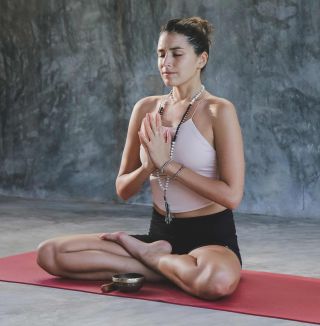
Source: Ian Stauffer/Unsplash
It makes sense that head trauma from a serious accident shows up on neuroimaging; but did you know that psychological trauma also shows up as damage to areas of the brain?
Specifically, the hippocampus (involved in memory) becomes reduced in volume, which may limit trauma survivors’ proper evaluation and categorization of experience. We also see increased activation of the amygdala, which is the area involved in the fight, flight, freeze response to stress, as well as decreased activity in Broca’s area, which is involved in speech production, which may explain the difficulty survivors sometimes face in describing and communicating their experiences.
Mindful meditation/breathwork is one way to try to be in the present despite traumatic memories and anxious anticipation of what may happen to us in the imminent future. How and why does it work?
Think of your brain as an “anticipation machine.” It creates a map of “now” by assuming what’s going to happen next. It’s not so much planning but anticipating its immediate next action(s). Violations to this frame of anticipation can result in startle responses, whether from a trauma memory or “triggers,” stimuli in the environment reminiscent of a traumatic event (e.g., a car backfiring, which sounds like a gunshot, or fireworks which sound like bombs going off).
A trauma memory, when it comes up, is not always neatly compartmentalized in its original time and place; a person may feel like it’s happening right now. An individual may want to fight, flee, or freeze in place when the memory comes up (Young et al., 2011), or a person can be so anxious about being triggered on a planned shopping trip by the thought of hearing a loud noise or experiencing the crush of people in a store that they are paralyzed by something that hasn’t happened yet.
Breathwork has been shown to be effective with those struggling with anxiety, panic, and traumatic memories (Fincham et al., 2023). By focusing on the inhalation, silently counting slowly to four, and exhalation (perhaps by slowly counting to five or six), the brain enters into a highly integrated state because it is able to perfectly predict the next moment. This is because when it comes to breathing, we literally “can do this in our sleep,” and so it’s a path of least resistance. With breathwork, we are just doing it consciously and mindfully. The focus is on the breath, the experience of your diaphragm expanding and contracting, and sensing what’s going on around you in the present (e.g., you can note the sound of a passing car, or a clock ticking on a wall, or someone doing something in the next room, etc. and then let that thought go).

Ale Romo/Unsplash
Three tips for meditation novices.
Mindful meditation is a call for careful attention to the moment-by-moment flow of experience—both internal and external. This awareness is characterized by:
- Being receptive to the experience, non-judgmental (i.e., dispense with the inner critic), and non-interfering (just note any thoughts, feelings, or observations, release them, and continue on with focusing on your breath).
- Self-compassion is hugely important. It’s not about doing breathwork “perfectly” or catching oneself “doing it wrong.” Expect your mind to drift; this is not an indication that you are messing up. Redirect your focus repeatedly without criticism or judgment. When your mind wanders (and it will), gently and compassionately bring your focus back to your breath. You could label an intrusive thought as “thinking,” “worrying,” etc.
- Be generous and kind to yourself. Resist a common coping style of blaming or self-criticism (you know if you are someone who tends to do that a lot). This is time for relaxation and to take a break from recrimination and “beating up on oneself.”
A great thing about breathwork is you can do it any time of day (before doing a task, while at work, during a break, when you arrive home, etc.) for a minute, three minutes, or five minutes. Mindful meditation is something that you can do anywhere and achieve a relaxation response, like a mini vacay from a stressful day, or getting grounded before changing tasks or roles (e.g., going from work to home). Try it and see.
